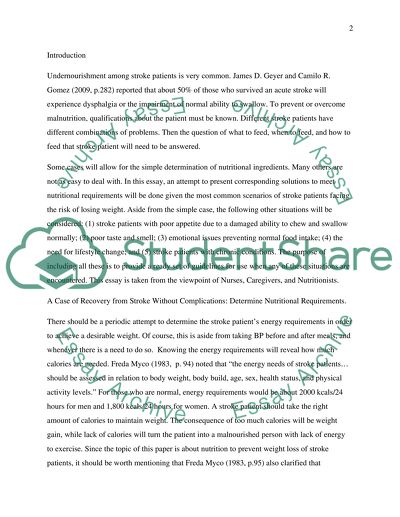Cite this document
(“Nutrition to prevent weight loss in stroke patients Essay”, n.d.)
Retrieved de https://studentshare.org/nursing/1390510-nutrition-to-prevent-weight-loss-in-stroke-patients
Retrieved de https://studentshare.org/nursing/1390510-nutrition-to-prevent-weight-loss-in-stroke-patients
(Nutrition to Prevent Weight Loss in Stroke Patients Essay)
https://studentshare.org/nursing/1390510-nutrition-to-prevent-weight-loss-in-stroke-patients.
https://studentshare.org/nursing/1390510-nutrition-to-prevent-weight-loss-in-stroke-patients.
“Nutrition to Prevent Weight Loss in Stroke Patients Essay”, n.d. https://studentshare.org/nursing/1390510-nutrition-to-prevent-weight-loss-in-stroke-patients.


